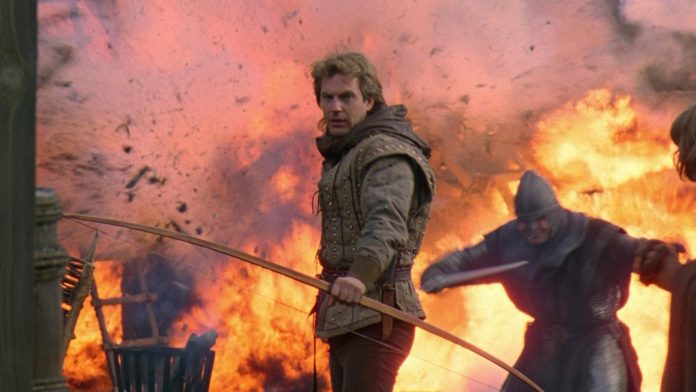There have been more than 10 different interpretations of the story of Robin Hood to grace the big screen, and not all of them are equal. This is a look at how the film industry has attempted to get every last drop out of the renowned folk hero.
Like the tale of King Arthur, Robin Hood is an old-English historical figure whose legend has grown over time thanks to the popularity of stories depicting his accomplishments. Robin Hood may or may not be based on a real person, and the particulars to the original character/icon are unclear because so much time has passed. Indeed, the story we associate most closely with Robin Hood is one that became popular more than 300 years after his supposed death.
On a basic level we can consider the story of Robin Hood to be a folktale. For nearly 800 years it had been primarily utilized for entertaining children, but it also inspired many plays, ballads, and novels. The story was lost for decades at a time more than once. Each time it was rediscovered and considered again by a whole new generation, to be passed down to their children, and their children’s children. Through all of these interpretations, rediscoveries, and historical inquiries the details have become varied and distorted. Chances are the story we know today may have very little in common with the actual Robin Hood, if he did actually exist.
The film industry has had an equally tough time nailing down the original caped crusader. Because the story isn’t an established fact such as a Shakespeare play or a historical event recorded in media, there is a lot of leeway that can be afforded to the way the character’s story is told and the nature of the character himself. Leeway is just another word for creative freedom, and we all know how Hollywood isn’t always motivated to maintain the integrity of an original story. This is especially the case when there is no license involved. There is no estate to restrict rights if the intent of the original work is not properly considered.
What has resulted is a smorgasbord of big screen versions of Robin Hood which have run the gambit of all types of approaches, genres, and intentions. Early versions of the story had the opportunity to shape our modern understanding of Robin Hood, whereas later versions made more desperate changes to attract attention and differentiate from the previous versions.
The following is a look at each of the major Robin Hood film productions, from the earliest to the most recent. I’ve given a brief glimpse at the differences, intentions, and legacies of each film, as well as whether or not the film can be deemed successful. This list is not complete – I left off some of the more minor productions which were similar to those I did include. I did NOT include any films that were non-English speaking, spin offs, or interpretations of the Robin Hood story using other characters or locations. These films are the ones tied most closely with the original character.
Robin Hood (1922)
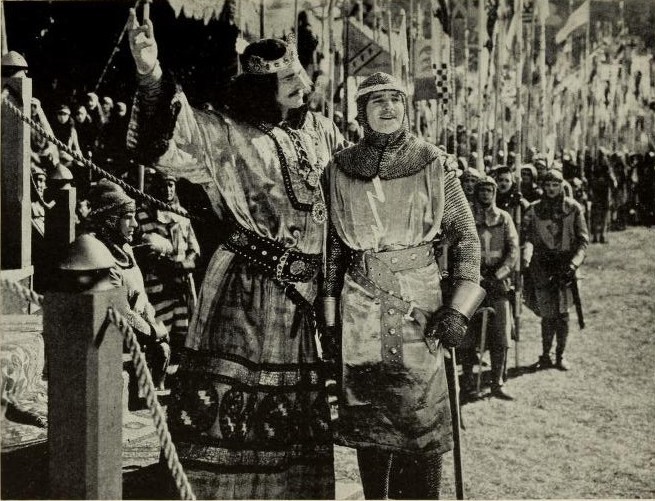
Genre: Big-Budget Silent Action/Adventure Film
Starring: Douglas Fairbanks, Wallace Beery
Premise: While fighting in the Crusades, King Richard the Lion-Hearted (Wallace Beery) is usurped by his treacherous brother, Prince John. Sir Huntingdon is fighting alongside King Richard, and learns of the terrible cruelties inflicted by Price John when his love interest writes to him. He escapes to England and adopts the name Robin Hood, gathering a band of merry men to fight the prince and his henchman, the High Sheriff of Nottingham.
Intent: Bring the legacy of Robin Hood to a high-quality and mainstream film production.
Legacy: The well-received big-budget silent film version of Robin Hood has an important legacy, even if it may be overshadowed by the next major adaptation. This film was the most expensive film ever made at the time. It was full of MASSIVE set pieces, and features the types of production that were nearly unheard of (including the first ever film premiere). The stunts are very good, and combined with the high production values and fun atmosphere it still remains entertaining to this day.
It is considered to be the best film of silent-era legend Douglas Fairbanks’ career, and is perhaps one of the most entertaining silent films ever made, and was a smash hit at the box office. It introduced mainstream audiences to Robin Hood and established the foundation upon which later versions would build. More importantly, the film’s success is what sparked interest in later adaptations of Robin Hood’s story.
The Adventures of Robin Hood (1938)
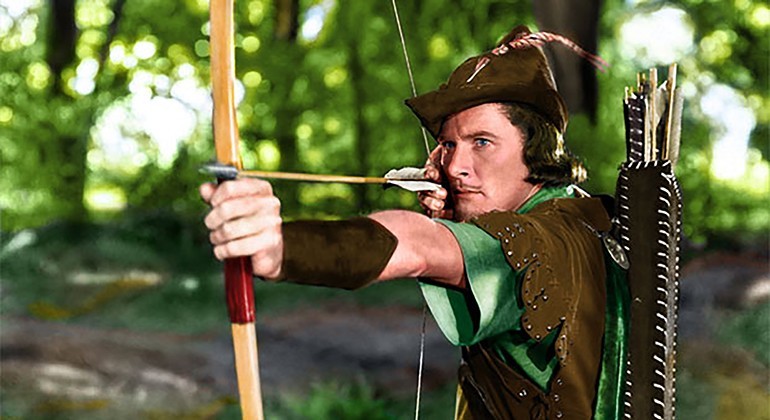
Genre: Big-Budget Adventure
Starring: Errol Flynn, Olivia de Havilland, Claude Rains
Premise: When King Richard is captured, his brother Prince John takes the throne and begins oppressing the Saxon population. Sir Robin of Locksley opposes the takeover and considers Prince John’s actions as treasonous, which causes him to lose his nobel status and become an outlaw. He forms a band in opposition, and wages a guerilla war against Price John and his followers.
Intent: Like many films of the era, Hollywood took a successful silent film and updated it by adding sound. The studio also wanted to modernize it, so they updated the dialogue and decided to film in color.
Legacy: This film is widely considered to be the best Robin Hood film that has been made so far. Errol Flynn was perfect for the role and gave the film a sense of energy and charisma later versions would struggle to replicate. The film’s technicolor was brand new at the time, and thoroughly impressed audiences at the time. The production and adventurous yet entertaining plot still holds up to this day.
The producer’s decision to modernize the story was correct, and would start a trend of filmmakers trying to update the story for more contemporary tastes in later adaptations. In many ways this film followed in the footsteps of the 1922 release, including a very expensive and extravagant production which has allowed the film to remain watchable to this day. This established the benchmark of what a Robin Hood film could be, and unfortunately no one has been able to get anywhere close since.
The Prince of Thieves (1948)
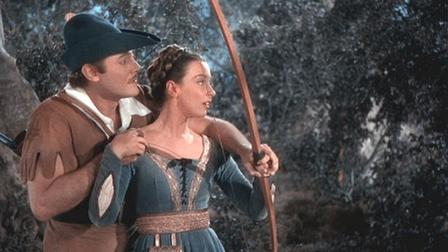
Genre: Low-Budget Adventure film
Starring: Jon Hall, Patricia Morison
Premise: Upon returning to England after fighting in the Crusades, Sir Allen Claire intends to marry Lady Christabel. However she is being forced to wed against her will to help her father’s political and financial interests. Claire joins with Robin Hood and his men to rescue Lady Christabel.
Intent: Hollywood was looking to make a quick buck, as is the case with most of the B-movie adventures of the time. To do so they often looked for stories that were in the public domain so that there wouldn’t be any issue with rights. This one is based off of an Alexander Dumas romance novel.
Legacy: This film has all but been forgotten. It represents a period of time in the 40’s and 50’s when Hollywood made several low-budget adventure films which featured Robin Hood as a character. As you can see the story doesn’t really revolve around Robin Hood and is based on a novel inspired by his legend rather than the folktale itself.
However, while the film’s artistic qualities and creative integrity may be suspect, it kind of kicked off a period of 3 decades where many low-budget adventure films would be made featuring Robin Hood as a character, not necessarily the lead character. Following a few similar films in the 40’s and 50’s, Robin Hood would become the hero in a number of campy Hammer Films adventures in the 60’s and 70’s, some of which are detailed below.
The Story of Robin Hood (1952)
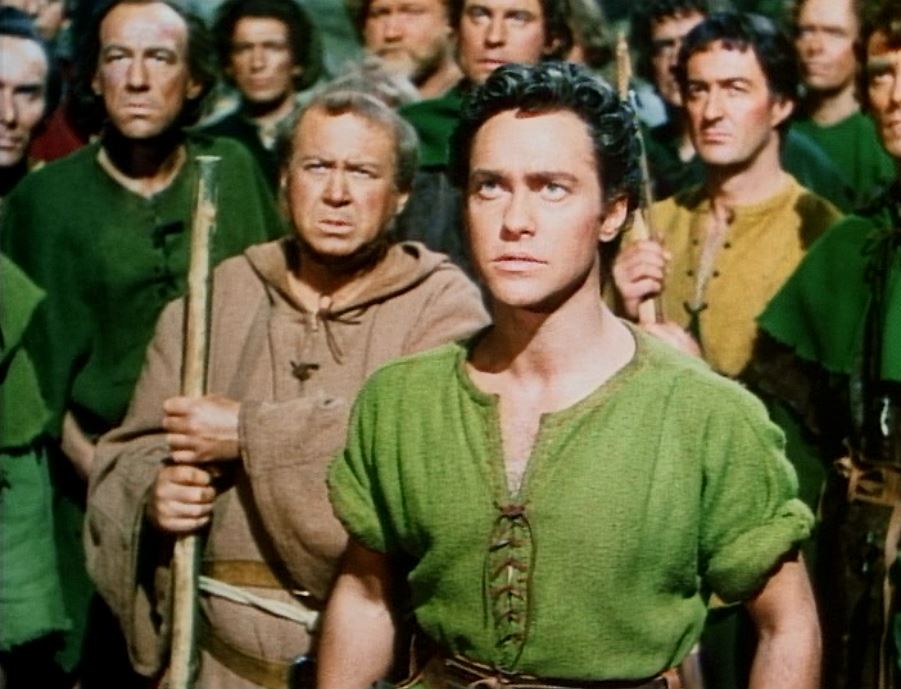
Genre: Family Adventure Film
Starring: Richard Todd, Joan Rice, Peter Finch
Premise: When Robin Hood’s father is killed by the henchmen of Price John, he forms his group of Merry Men to avenge his father’s death and help the populace fight against the tyrant.
Intent: Create a live-action, family-friendly Disney-backed version of Robin Hood.
Legacy: While the film is mostly forgotten today, it was fairly successful at the time of its release. This was the second live-action film ever produced by Disney, and was filmed in England. The English connection gave it an authenticity that earlier productions had not been able to provide, and the update to make the story more direct and streamlined helped to make the film palatable for younger audiences. Indeed, you could consider this version to be closer to the traditional use of Robin Hood’s story as a folktale for children than previous renditions.
While the film may not have added significantly to the cinematic legacy of Robin Hood, it did help Disney establish itself as a film studio outside of its animated output. At the time adventure films were mostly B-movie affairs, and prestige pictures went epic or musical – this film found a sweet spot in between. Furthermore, Disney would further their exploration of the family-friendly approach to Robin Hood with their animated version two decades later.
Sword of Sherwood Forest (1960)
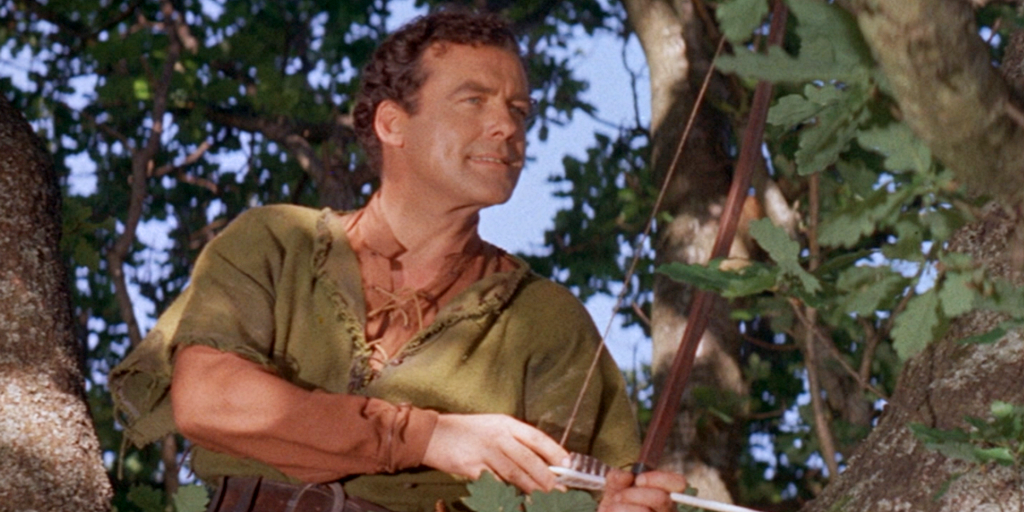
Genre: Low-Budget Adventure film
Starring: Richard Greene, Peter Cushing
Premise: When the Archbishop of Centerbury speaks out against the actions of the Sheriff of Nottingham, Robin Hood is hired to assassinate the Archbishop. But upon learning of Nottingham’s indiscretions, Robin Hood turns against him.
Intent: Interpret the story of Robin Hood in a new and exciting way.
Legacy: The first of three Hammer Films depicting Robin Hood, it is exactly what it seems. Its an example of how Robin Hood’s story could be manipulated to service a more cinematic approach – using only names and themes but with different motivations and consequences. It wasn’t a reimagining like later versions, but an attempt to use a familiar story to bring audiences into theaters. The film never really caught on, and is not considered to be a good Hammer Films effort.
A Challenge for Robin Hood (1967)
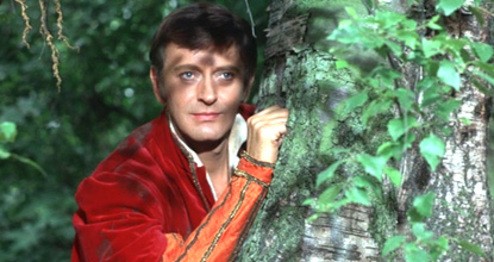
Genre: Low-Budget Adventure film
Starring: Barrie Ingham, Peter Blythe
Premise: A family strife influenced by the capture of King Richard forces Robin into exile where he meets a band of outlaws and becomes their leader. Together they fight against the Sheriff of Nottingham in a series of back-and-forth skirmishes.
Intent: Like other Hammer Films, this one is intended to be an escapist experience.
Legacy: Another Hammer Films-related production, this one improves on its predecessor with more action and humor to become a more entertaining, if not memorable adventure film. By all intents and purposes it succeeds in what it set out to accomplish. It has more energy and passion than Sword of Sherwood Forest, but of course lacks the star power, charisma, and high production values of interpretations by other studios. It does show a further “watering down” of the Robin Hood story for cinematic purposes – choosing to spend more time on swashbuckling than storytelling.
Robin Hood (1973)
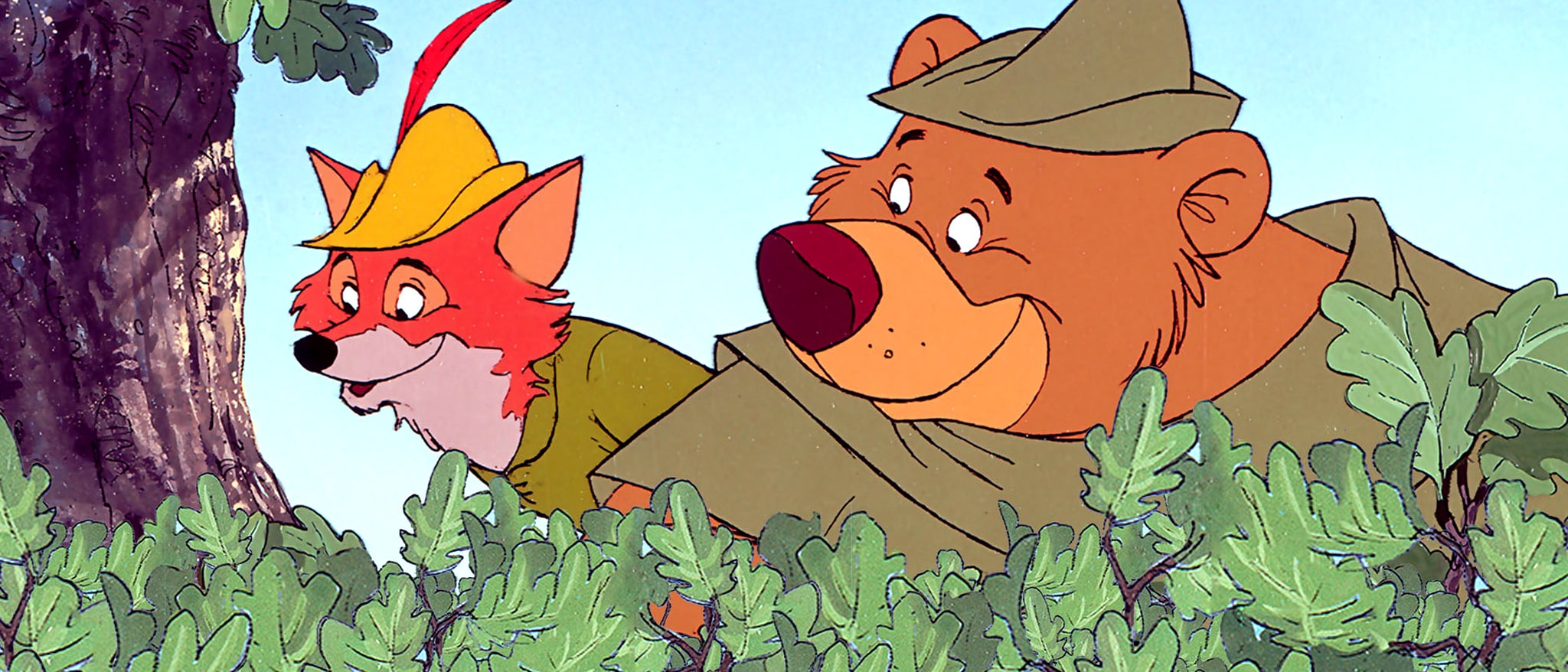
Genre: Animated musical-comedy
Starring: Brian Bedford, Monica Evans, Phil Harris
Premise: Prince John fools his brother to fight in the Crusades and takes over as king, becoming a greedy tyrant who over taxes the poor. Robin Hood and Little John are outlaws who steal from the rich to give to the poor. After Robin fools Prince John and rescues Marian, they become the targets of Prince John’s frustrations as he takes his anger out on the other creatures living in the forest. They decide to band together with Robin Hood against the tyrant and his men.
Intent: Create a children’s animated film based on a classic story.
Legacy: While it remains notable as being the only animated feature interpretation of Robin Hood, the film has not held up well as a Disney animated classic. As was the case for other Disney animated films of this era, it traded in a timeless appeal in order to be more contemporary and direct. It didn’t help that the film’s production was troubled which resulted in some corners being cut, further damaging Disney’s reputation in terms of animated production.
In regards the the impact on the legacy of Robin Hood, it essentially catered to the best-known attributes of the story with some important changes. First, creating a cast out of animals was an effort to adapt the story to be more family-friendly. Second the producers decided to make it more of a buddy film with Robin Hood and Little John, largely ignoring the rest of the Merry Men. This would allow the film to be more silly, relying on slapstick and song and dance vs. choreographed action and adventure.
Wolfshead: The Legend of Robin Hood (1973)
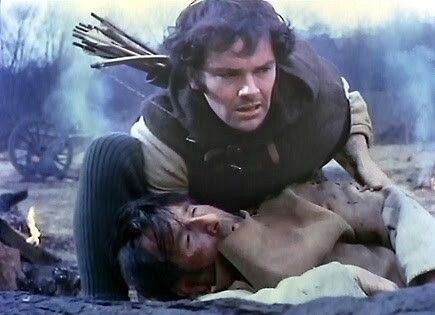
Genre: Historical drama
Starring: David Warbeck, Kathleen Byron, Kenneth Gilbert
Premise: Robert of Loxley is a Saxon farmer who stands up against the nobility when they attempt to track down a fugitive on his land. This places him in the cross hairs of Roger of Doncaster who attempts to have him arrested and stripped of his holdings. Robert, with the help of others, band together to fight back.
Intent: Originally intended as a pilot for a new television series, it was later released as a feature film when the production for the television series fell through.
Legacy: This is the third Hammer Films production based on Robin Hood, and despite the film’s comparative lack of success, may be the most important one. This was the first Robin Hood film where the producers tried to examine the original story of Robin Hood and interpret it based on our understanding of history at the time rather than our interpretation of the story over time. This results in a radically different approach, which would be reexamined in later adaptations.
Really this is the first film that tried to do some justice to the real person behind the legend of Robin Hood rather than the folklore. Because the film was intended as a pilot for a television show, it didn’t need a wide scope or have to pander to the tropes of the Robin Hood story. However, this creative decision did impact the film’s pop culture appeal which is why it has mostly been forgotten along with the other live-action Robin Hood films of this time period.
Robin and Marian (1976)
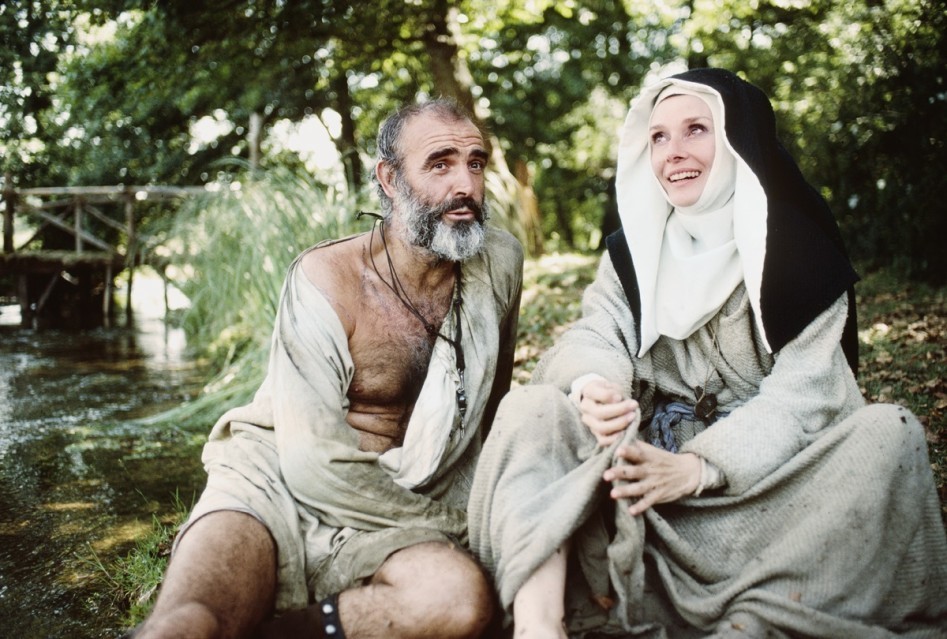
Genre: Romantic Historical Drama
Starring: Sean Connery, Audrey Hepbern, Robert Shaw, Richard Harris
Premise: An older Robin Hood returns to Sherwood Forest upon the death of King Richard. Here he finds that Marian has become a mother superior at a covent. When King John orders the Sherif of Nottingham to arrest Marian in an effort to rid the country of Roman Catholics, Robin Hood fights him off and rescues her. Over time their attraction grows. The feud between King John and Robin’s men resumes.
Intent: Create a more mature film to reflect on the legacy of Robin Hood rather than tell his origins.
Legacy: So it begins, the efforts of filmmakers to “put a new spin” on Robin Hood in a big-budget production. All of the later versions of Robin Hood would follow suit, investigating the character from new angles or perhaps putting him in different settings as a way to “modernize” the premise. While none of those later films would focus on an older version of the hero like this film does, it still set the precedent for major studios to take liberties with the source material when making a big-budget adaptation.
It almost felt like this film acknowledged the past successes and failures of previous Robin Hood films and rather than add to the confusion just skipped over that part of the story entirely. It’s a novel approach, and certainly ended up with a memorable result (mostly due to the star-studded cast). However, it doesn’t really work as a definitive statement on the character unlike some of the older films. This is especially true since the film could serve as a sequel to anything that had come before.
Robin Hood: Prince of Thieves (1991)
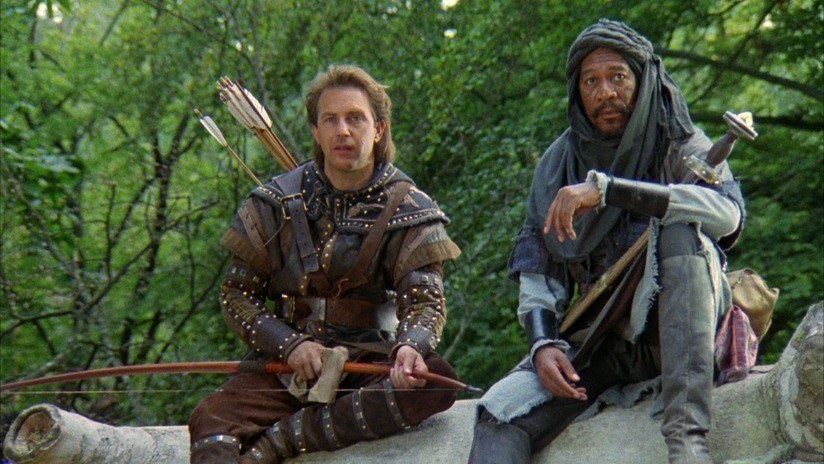
Genre: Action blockbuster
Starring: Kevin Costner, Morgan Freeman, Alan Rickman
Premise: After escaping imprisonment during the Crusades, Robin of Locksley returns to England to find his father killed and the evil Sheriff of Nottingham in command. Robin flees Nottingham into Sherwood forest where he befriends a band of outlaws and eventually becomes their leader. Together the men steal from the rich to give to the poor, which infuriates Nottingham and causes armed conflict.
Intent: Make a commercially successful Robin Hood film with a different type of character motivation.
Legacy: Whereas Robin and Marian can at least be seen as an effort to further explore the character of Robin Hood unlike what had been achieved before, this 1991 film started and ended with dollar signs in mind. This film was in competition with two other different productions of Robin Hood, and so there was a very strong motivation to get the film finished and into theaters as soon as possible. This problem, combined with Kevin Costner’s busy schedule made it nearly impossible to do reshoots, and as a result the film kind of had to figure itself out as it went along.
The final product is a jumbled mess with clear overtones of studio interference and rushed production. The biggest issue is the film’s lack of enthusiasm, or at least consistent attitude, towards the source material. Its a classic example of a big budget production exploiting a classic story in an effort to make it into a blockbuster. As a result this film somewhat tarnished the cinematic legacy of Robin Hood, turning it into a joyless money making exercise.
Robin Hood: Men in Tights (1993)
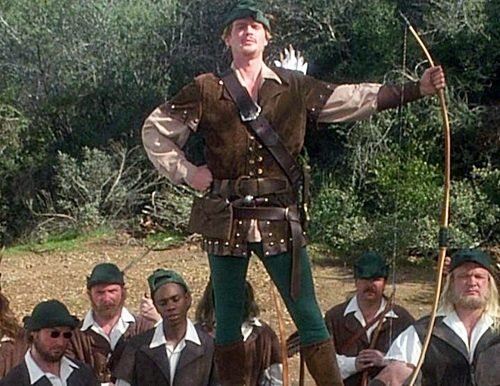
Genre: Comedy/Parody
Starring: Cart Elwes, Richard Lewis, Dave Chapelle
Premise: After escaping imprisonment during the Crusades, Robin of Loxley returns to England to find his family is killed and Prince John taking command. John’s men occupy Loxley’s home, and he joins with a band of men to drive them out.
Intent: A spoof on Robin Hood films of the past, namely the 1991 version.
Legacy: By the time Men in Tights entered production there were more than 10 different films depicting stories of Robin Hood. The middeling success of most of those films offered prime opportunities for a parody, and in stepped Mel Brooks (who had, coincidentally created a Robin Hood-themed sitcom in the 1970’s). Men in Tights did not find the widespread appeal and appreciation as Brook’s previous parodies in the 70’s and 80’s, but it has since grown a cult following. It also further negatively impacted the traditional perspective on Robin Hood and the folklore story, such that later adaptations shied away from the conventional depictions as much as possible.
Robin Hood (2010)
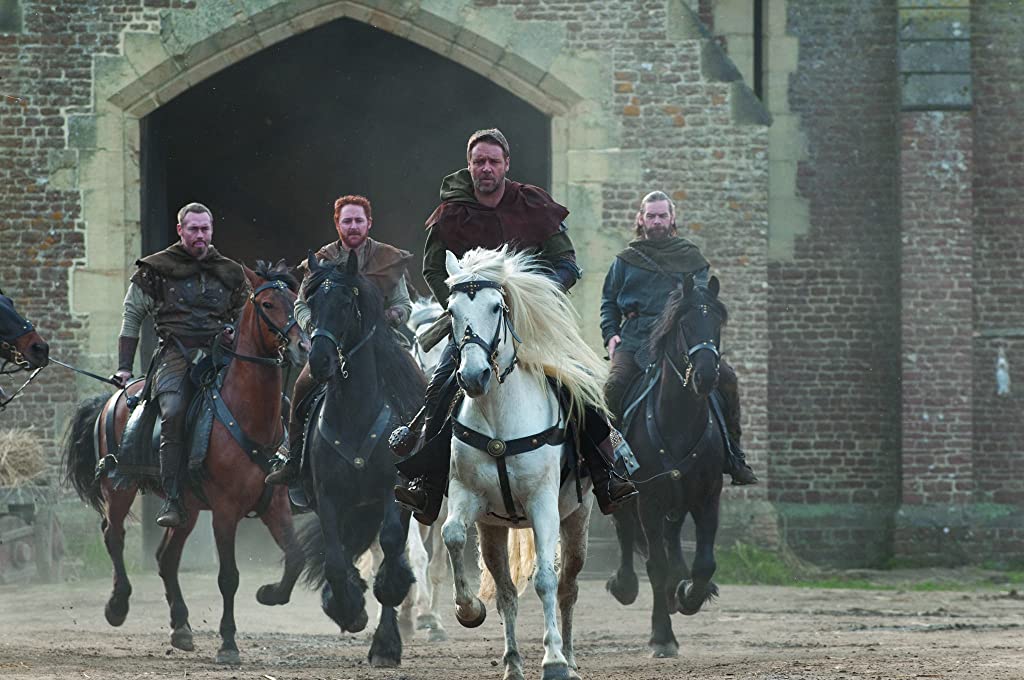
Genre: Epic action film
Starring: Russel Crowe, Cate Blanchett, William Hurt, Mark Strong, Oscar Issac
Premise: Robin Longstride is a soldier in the crusades. When King Richard is killed, Robin and his soldier friends impersonate knights in order to secure passage back to England. Prince John ascends to the throne and begins implementing new taxes, assigning authority to a knight named Godfrey who is secretly planning to assist the French to invade England. Meanwhile Robin returns to Loxley’s home and must maintain the charade in order for the family’s lands not to fall into King John’s hands. Robin earns a reputation as a kind and valiant man, and helps King John centralize support against the invading French.
Intent: What originally began production as a crime-thriller type film that would center around the Sheriff of Nottingham (originally titled Nottingham) eventually became an epic action film intending to meld many Robin Hood influences into one.
Legacy: Ridley Scott’s Robin Hood is the result of too many cooks in the kitchen, and a veteran director who couldn’t commit to a singular treatment. The film was originally intended to give a new perspective to the Sheriff of Nottingham, which would have framed Robin as somewhat of a criminal. However, when Ridley Scott joined the production he had reservations about framing Robin Hood in this light. Over time the script was massaged and the Nottingham angle was dropped altogether. They did maintain the idea that Robin was not as valiant as in previous interpretations, but the focus was to add in historical context rather than adhere to the traditional story. While this film was similarly received as the last few Robin Hood films, it still failed to make much of an impact. The muddled, history-focused storyline didn’t help.
Robin Hood (2018)
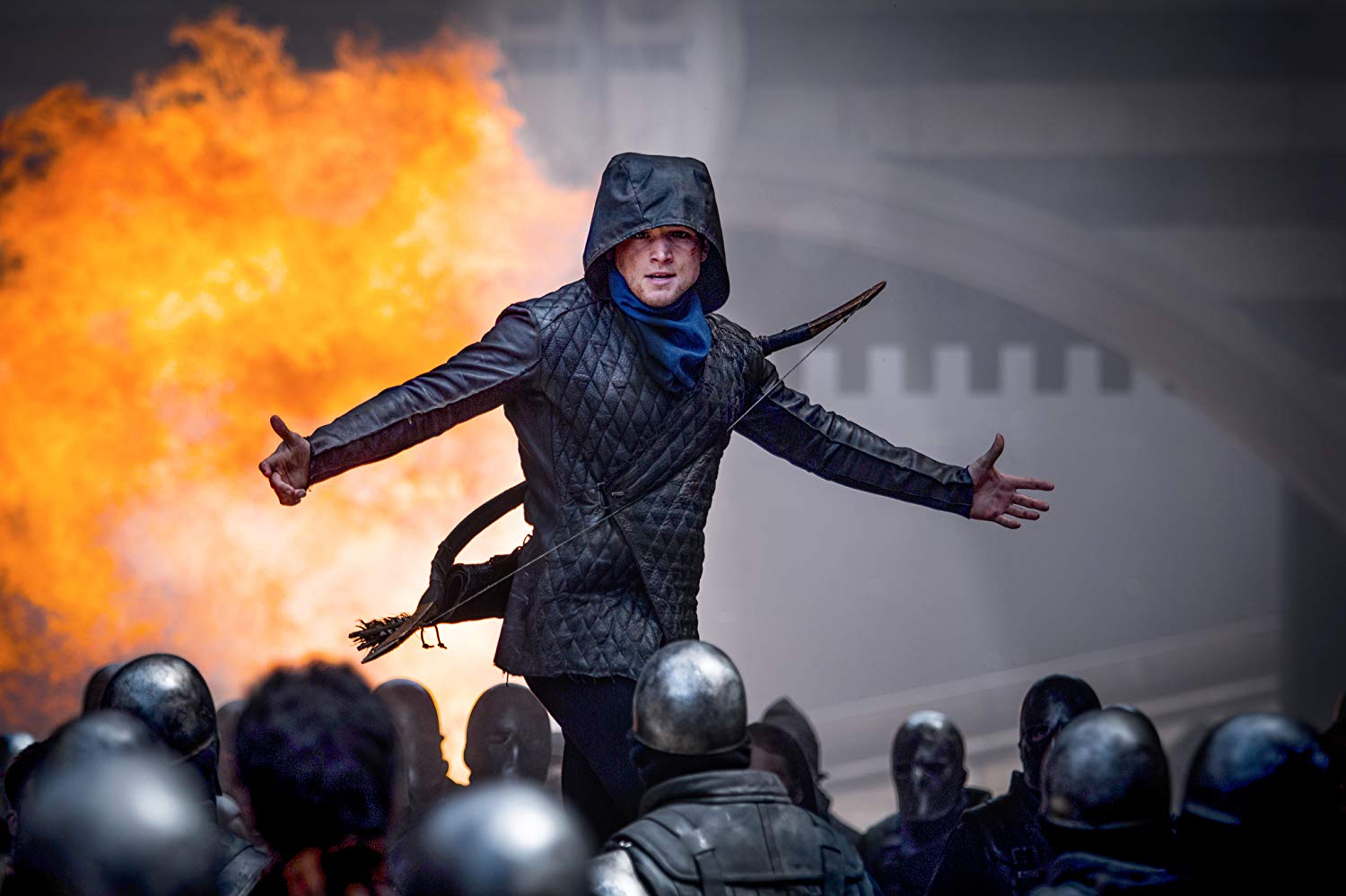
Genre: Big budget action film
Starring: Taron Edgerton, Jamie Foxx,
Premise: Aristocrat Sir Robin of Loxley is drafted by the Sheriff of Nottingham into the Crusades where he witnesses the atrocities of war. He is sent back home only to find that he had been declared dead so that Nottingham could take over his property and use it to fund the war. He finds the citizens displaced, and are planning an uprising. Robin joins their cause indirectly, posing as a Lord who supports the Sheriff in order to get close to him and exploit his wealth for the citizen’s cause. Eventually Robin then leads the citizens into battle against Nottingham.
Intent: See Robin Hood: Prince of Thieves.
Legacy: The famous quote “those who don’t learn from history are doomed to repeat it” comes to mind with this most-recent Robin Hood film. Just like during the production of 1991’s Prince of Thieves, there were several versions of Robin Hood films trying to make it into production at the same time. This one was the first to see the greenlight, which killed the other two. Like that 1991 production, this one lacked a solid motivation other than updating the classic story to meet modern action movie standards.
This version of Robin Hood was universally panned by critics and was a box office bomb. Unlike previous adaptations it didn’t bring anything new to the table. This was intended to be the start of a new franchise, so at the very least you could consider it as a modern take on the idea of a Robin Hood film in terms of structure more so than actual content. As a result of this film’s failures it feels like any interest in additional Robin Hood remakes has been quenched for the near future.

